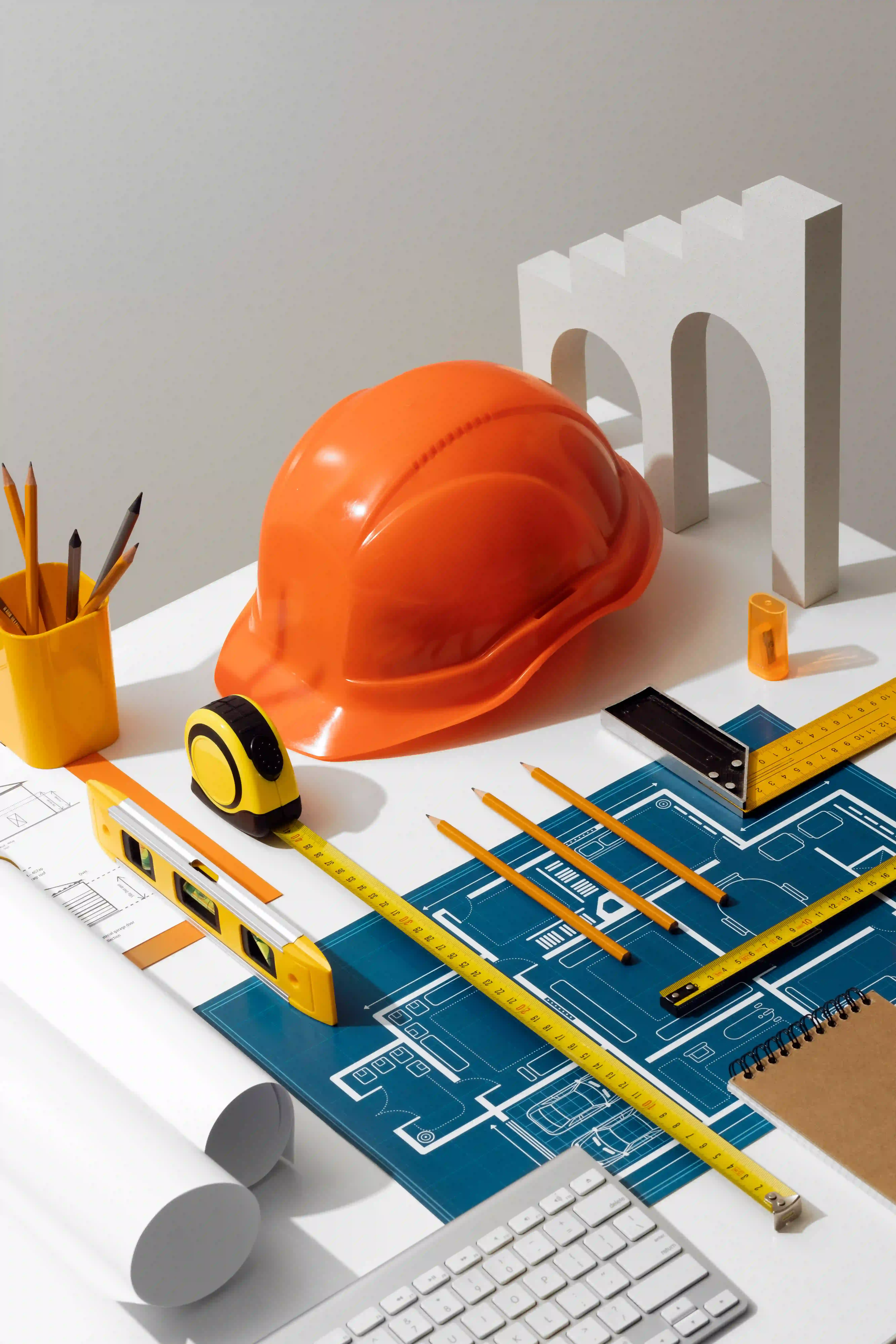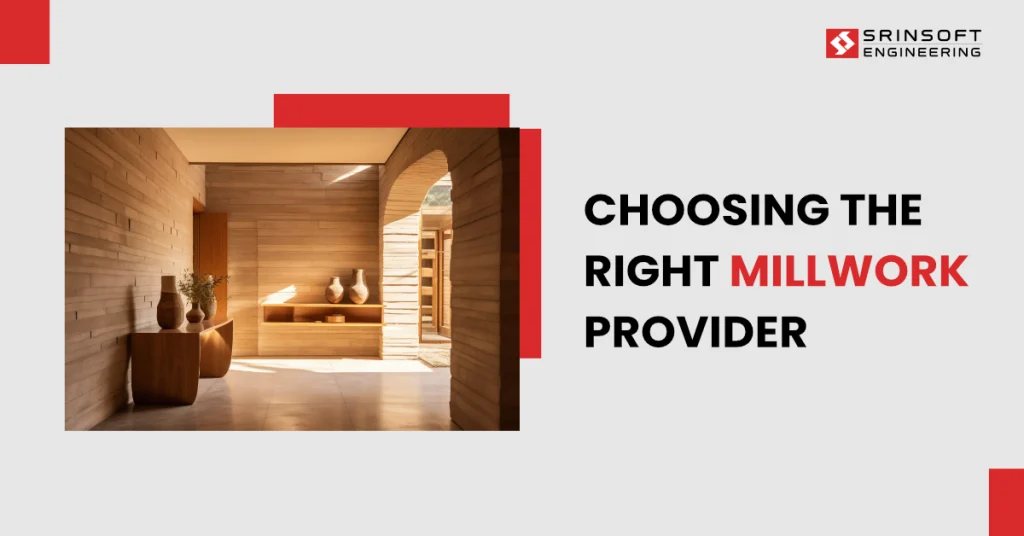
In the realm of architectural and interior design, custom millwork services have emerged as a pivotal component.
These services encompass the creation and installation of finely crafted woodwork elements, tailored to meet the specific requirements of a space.
From intricate cabinetry to ornate moldings, millwork adds a touch of elegance and functionality to any environment.
The Art of Custom Millwork
Custom millwork is akin to an art form, where skilled craftsmen blend creativity with precision. Each piece is meticulously crafted, considering not only the design aesthetics but also the functionality it brings to a space. This bespoke approach ensures that every millwork element is a unique masterpiece.
Importance of Engineering Design in Millwork
Engineering design involves the meticulous planning, measurement, and detailing of each element to ensure seamless integration within a given space.
This process guarantees that the millwork not only looks visually appealing but also functions optimally.
1. Precision and Accuracy
Engineering design ensures that every millwork component is precisely measured and crafted to fit seamlessly within a given space. This precision guarantees that the final installation is not only visually appealing but also functions optimally.
2. Optimal Material Utilization
Through careful planning and design, engineers can optimize the use of materials, minimizing waste and reducing overall project costs. This efficiency is particularly crucial when working with high-quality hardwoods and specialty woods.
3. Structural Integrity
Engineering design takes into account the structural requirements of each millwork element. This ensures that cabinets, moldings, and other components can support their intended loads and withstand everyday use.
4. Compatibility with Other Elements
A well-engineered millwork design considers the integration of various elements within a space. This includes factors like electrical outlets, plumbing fixtures, and HVAC systems, ensuring that everything fits together seamlessly.
5. Compliance with Building Codes and Regulations
Professional engineering design ensures that millwork installations meet local building codes and regulations. This is critical for ensuring the safety and legal compliance of the finished project.
6. Adaptability and Future-Proofing
A thoughtfully engineered millwork design allows for adaptability in the future. This means that if changes or renovations are necessary down the line, the millwork can be modified or expanded without compromising the overall integrity of the space.
Materials Used in Custom Millwork
The choice of materials in custom millwork is critical in determining the longevity and visual appeal of the finished product.
High-quality hardwoods such as oak, maple, and cherry are commonly used for their durability and aesthetic versatility.
Additionally, sustainable and reclaimed wood options are gaining popularity for their eco-friendly attributes.
The Process of Crafting Custom Millwork
Crafting custom millwork is a multi-step process that begins with conceptualization and design. Skilled artisans translate these designs into tangible pieces, employing a combination of traditional handcrafting techniques and modern machinery.
Each piece undergoes rigorous quality checks before installation. Here’s the step-by-step process of crafting custom millwork:
1. Conceptualization and Design
The process begins with a thorough discussion between the client and the millwork provider. This involves understanding the client’s vision, functional requirements, and aesthetic preferences.
Skilled designers create detailed drawings and plans, often using CAD software. These plans include precise measurements, material specifications, and intricate design details.
2. Material Selection
Once the design is finalized, the appropriate materials are selected. This choice depends on factors such as the desired aesthetics, budget constraints, and the specific function of the millwork piece.
Common materials include hardwoods like oak, maple, cherry, as well as specialty woods for unique finishes.
3. Preparation of Raw Materials
The chosen wood is carefully inspected for quality and any imperfections. It is then cut, shaped, and prepared for assembly. This may involve planning, sawing, and joining to create the individual components of the millwork.
4. Joinery and Assembly
Skilled craftsmen employ precise joinery techniques to connect the various components. This may include methods like dovetail joints, mortise and tenon joints, and tongue-and-groove joints.
Careful attention is paid to ensure that joints are strong and seamless.
5. Finishing Techniques
Once assembled, the millwork piece undergoes a finishing process. This involves sanding the wood to achieve a smooth surface. The piece is then stained or painted according to the client’s preferences.
Some projects may also incorporate specialty finishes like distressing or antiquing for a unique look.
6. Quality Assurance
Before installation, each millwork element undergoes rigorous quality checks. This includes a detailed inspection for any imperfections, ensuring that the piece meets the highest standards of craftsmanship.
7. Installation and Fitting
On-site installation is a critical phase. The millwork is carefully transported to the location, and skilled installers ensure that each piece fits perfectly within the designated space.
Attention is given to alignment, leveling, and securing the millwork in place.
8. Final Touches and Detailing
Once installed, any final adjustments or detailing are made. This may include fine-tuning hinges, handles, or other hardware to ensure smooth operation.
9. Sealing and Protection
Depending on the type of wood and finish used, a protective sealant may be applied to safeguard the millwork from moisture, UV rays, and other environmental factors.
10. Client Inspection and Approval
The client is invited to inspect the completed millwork and provide feedback. Any minor adjustments or additional detailing requested by the client are addressed at this stage.
11. Documentation and Maintenance Guidelines
Detailed documentation of the project, including design plans and material specifications, is provided to the client. Additionally, maintenance guidelines are offered to ensure the longevity and beauty of the millwork. From design conception to final installation, attention to detail and skilled craftsmanship are paramount.
Incorporating Sustainability in Millwork
Utilizing responsibly sourced wood and implementing eco-friendly finishing techniques not only reduces environmental impact but also ensures a healthier indoor environment for occupants.
Cost Considerations in Custom Millwork
While custom millwork offers unparalleled quality and customization, it’s essential to consider budgetary constraints. Clear communication with the millwork provider regarding budget expectations ensures that the project stays on track.
Future Trends in Millwork Services
As design trends evolve, so do the possibilities in millwork. Innovations in materials, finishes, and design techniques continue to shape the future of custom millwork, promising even more exciting possibilities for architectural and interior design.
Conclusion: Crafting Timeless Spaces with Millwork
In the realm of architectural design, custom millwork stands as a testament to the marriage of artistry and engineering precision.
By integrating bespoke woodwork elements, spaces are transformed into living works of art, exuding both functionality and elegance.
Frequently Asked Questions (FAQs)
Q1. What is the lead time for custom millwork projects?
Lead times for custom millwork projects vary depending on the scope and complexity of the project. It’s best to discuss timelines with your chosen millwork provider.
Q2. Can custom millwork be done for commercial spaces?
Absolutely. Custom millwork is versatile and can be tailored to suit the unique requirements of commercial spaces, including offices, retail stores, and hospitality venues.
Q3. Is custom millwork suitable for historic restoration projects?
Yes, custom millwork is an excellent choice for historic restoration. It allows for the replication of intricate details and ensures a seamless blend with existing architectural elements.
Q4. What maintenance is required for custom millwork?
Regular dusting and occasional polishing with a suitable wood cleaner are usually sufficient to maintain the beauty of custom millwork. Avoiding exposure to direct sunlight and extreme humidity is also advisable.
Q5. Can I choose a custom finish for my millwork project?
Yes, you have the flexibility to select from a range of finishes that complement your design preferences. These can include stains, paints, and specialty finishes to achieve the desired look.

.png)

